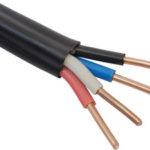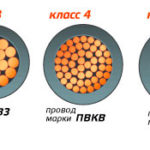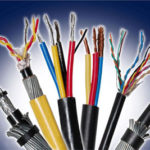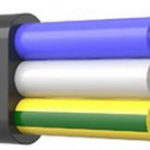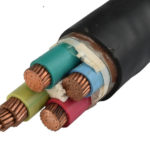On the shelves of stores represented a wide range of electrical products. No exception and power cable For electrical wiring. Untrained user is difficult to understand what cable to use for wiring in the apartment.
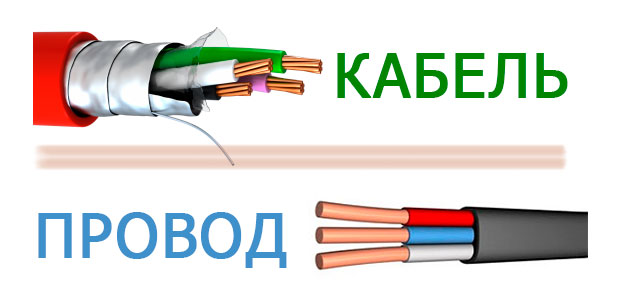
Contents
The difference between cables and wires
Many people consider the above concepts synonymous. Products can be distinguished by manufacturer's markings. Mostly under the cable mean wirecovered with a strong double layer of insulation, one of which covers the conductive cores, and the second covers the entire complex.
The wire is characterized by a lighter insulation, giving a weakened structure to this element. Sometimes it is double, but in the open form is characterized by instability under corrosive conditions. It is not resistant to prolonged stress and can easily catch fire. When deciding which wires are best for wiring your home, it makes the most sense to choose cables.
A distinction is made according to the form of wires and cables round or flat, but this indicator determines the ease of use. The main classification unit is the specification.
Copper or aluminum
During Soviet times, aluminum was used for apartment wiring, which was due to:
- lower price in comparison with copper wires for electrical wiring;
- lightweight construction.
At the same time, aluminum wires have more negative qualities than positive:
- reduced electrical conductivity;
- oxidation upon contact with air, which increases resistance and reduces the useful cross-section;
- service life does not exceed 20-25 years;
- increased brittleness;
- the complexity of installation of wiring.
Advantages of copper used in electrical wiring:
- good conductivity even after the formation of a film on the surface;
- service life - up to half a century;
- high mechanical strength;
- installation is easy.
The only disadvantage of such wiring is its high cost. Determine what kind of cable is needed for wiring, in the building regulations, according to which the wiring in various buildings are carried out of copper cables and wires. Here are references to the PUE.
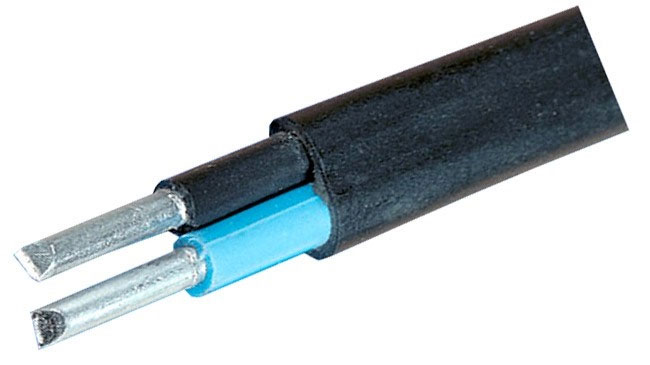
If there is a lack of money, it is possible to perform combined wiring. The wire for the outlets necessarily with copper conductors, and the cable for lighting - with copper or aluminum. When using multi-metal elements will have to buy junction blocks or special terminals that prevent direct metal contact, due to which aluminum is strongly oxidized. This increases the contact resistance, heating and contributes to burning.
Electrical circuits in flammable structures with aluminum conductors are most susceptible to overheating, so you should use copper wiring in a wooden house.
Single-wire or multi-wire cable
Both single-wire or solid and stranded conductors are used. It is determined which cable you need for wiring is determined by the equipment you use: fixed or portable.
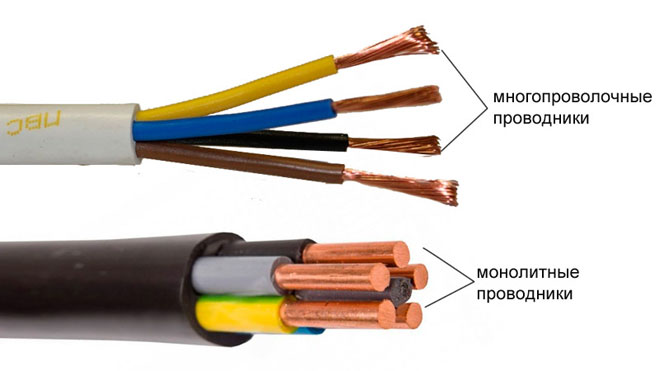
Single-wire cable has increased rigidity and is used in fixed wiring. Multi-wire has several thin conductors that form the cross section of the conductor. When you connect them to terminals, you must perform their crimping or termination. Such elements are used in hard-to-reach places and connection of portable equipment.
Both variants can be used for home wiring. The choice is based on the ease of installation and operation. For concealed wiring, it is possible to use solid wire under plaster. For massive steep turns, it is better to use a multi-core conductor in any wiring option. Today, for electrical wiring in an apartment, 3-core single-wire (single wire) cable.
Single-conductor elements are also used for cable entry into the apartment. Because of their flammability, multiwire cables are not used for fixed installation in apartments.
Cross-section of cables
Selection of wiring for a wooden house or apartment is made of available with copper conductors, with a minimum cross-section - 1.5 mm². It characterizes the carrying capacity. With such elements, 1 mm² passes 8-10 A, and with aluminum - only 5 A. Calculation of the wiring in a detached house or other building is performed separately according to the load, then the following cross-sections are selected cables.
The table shows the cross-sections used for home wiring (cable VVGng-LS).
| Designation | Cross section, mm² | Rated power, kW | Recommended rating of automatic circuit breaker, A |
|---|---|---|---|
| Lighting | 3х1,5 | 4,1 | 10 |
| Sockets | 3х2,5 | 5,9 | 16 |
| For electric stove or cooker hob | 3х6 | 10,1 | 32 |
The entry wiring in the apartment is made with a cross-section of 3x6 mm². Selected by power and current.
The buyer should understand that the cross-section and diameter are different concepts. The first is the area of the circle, calculated as 0.785 square of the diameter. This figure is always rounded upwards when buying.
Popular grades for electrical wiring
GOST 31565 regulates the use of fire-resistant electrical wiring. It allows the use of the following types of cables in the performance of internal wiring:
- нг-LS - having low gas and smoke emission;
- ng-HF - not releasing halogens during combustion and products based on gases during combustion.
Type 1 varieties include VVGng-LS, and to the 2 - PPGng-HF ..
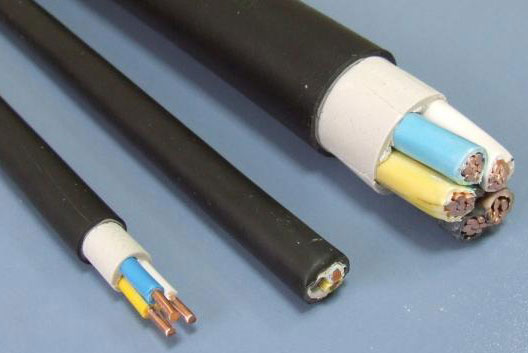
The following are considered non-combustible wiring cables VVG and NYM brands. The advantages of their use include:
- large range;
- high fire safety;
- easy installation;
- high-quality performance;
- high durability;
- low smoke and self-extinguishing.
VVG cable
For many specialists, the question of how to choose a wire for laying in a living room is not a question. They use the brand VVG. Single-core copper conductors are used here. It is widespread in structures with normal or high humidity. The maximum allowable voltage is 660 V. In 1 element is 1-5 wires, cross-section 1.5-240 mm². The shape of conductors is different: from triangular to flat.
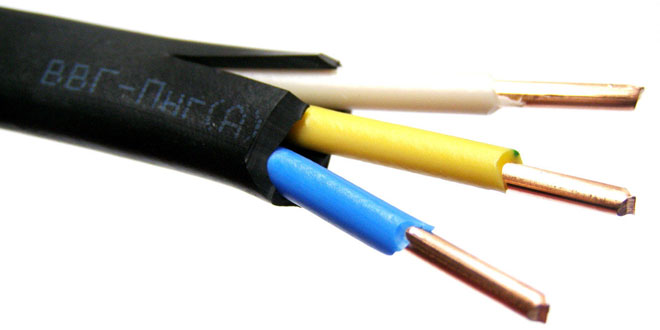
Several models are produced, differing in the parameters of the insulation:
- VVG - with insulation and vinyl sheathing;
- similar with the index "ng" - equipped with insulation with self-extinguishing function;
- "ng"-variety with the continuation of -LS - similar non-combustible core insulation with low smoke emission by the shell;
- VVGng FR-LS - to the advantages of the previous modification has additional fire protection in the form of mica tape.
All "ng" varieties are suitable for installation in bundles (1 carrier). They are also used for wiring in the country house.
Read more about power cable VVG is written in our article.
Cable NYM.
It was created in Germany. Produced in the Russian Federation. It uses a copper conductor. Adherents of European goods are better to use these cables for wiring in the apartment. According to the performance similar to VVGnm. It can be single-wire stranded, with a cross section of 1.5-10 mm², and multi-wire - from 16 mm². The composition includes a rubber filler, which provides non-flammability and is located between the insulation of the cores and the sheath. Cable for the sockets are used with a cross section of 3x2,5, for switches - 3x1,5.

Learn more about NYM cable cable can be found in our article.
What wires are not suitable?
Carrying out electrical wiring in the apartment is not a cable, and the wire, even if stranded or with double insulation - not a good idea. They are easily flammable with prolonged use. Wires do not meet the requirements of PUE for residential buildings. Therefore, if there is a choice and the opportunity, then the question of what wire to use for wiring, you should answer that the cable is used.
Wire PVS.
From it produce extension cords, connect household appliances to home wiring. The work is done up to 380 V, the number of conductors - 2, cross-section of the multi-wire core 0.75-10 mm². Copper conductor wrapped in vinyl materials is used.
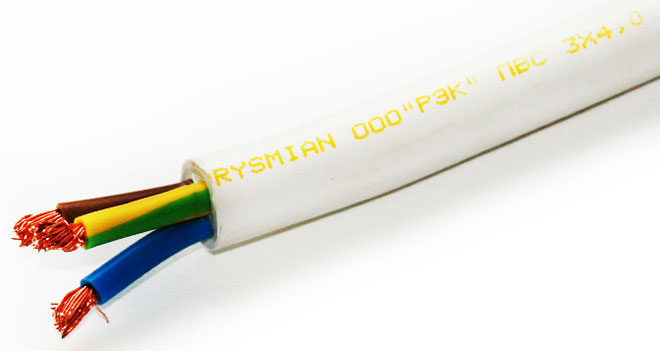
The wiring is of low quality. The cost is low, but it is outweighed by the higher price of the work:
- The connecting ends must be tinned and soldered;
- has an increased risk of fire because of the multiwire core;
- does not assume their presence in 1 device.
Wires and cords SHVVP, PVVP
Copper conductors are single- and multi-wire. Household electrical appliances are connected. No non-combustible insulation. Service life is not long. Do not use for stationary wiring.
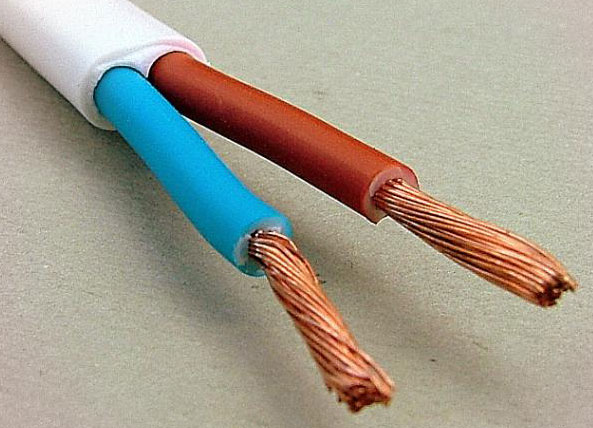
PUNP wire
Because of its unreliability, this wire has been banned in electrical wiring since 2007. It was allowed in the USSR. Today, due to the use of high-power equipment, it is not able to withstand increased loads. It has weak insulation.
Related articles:
